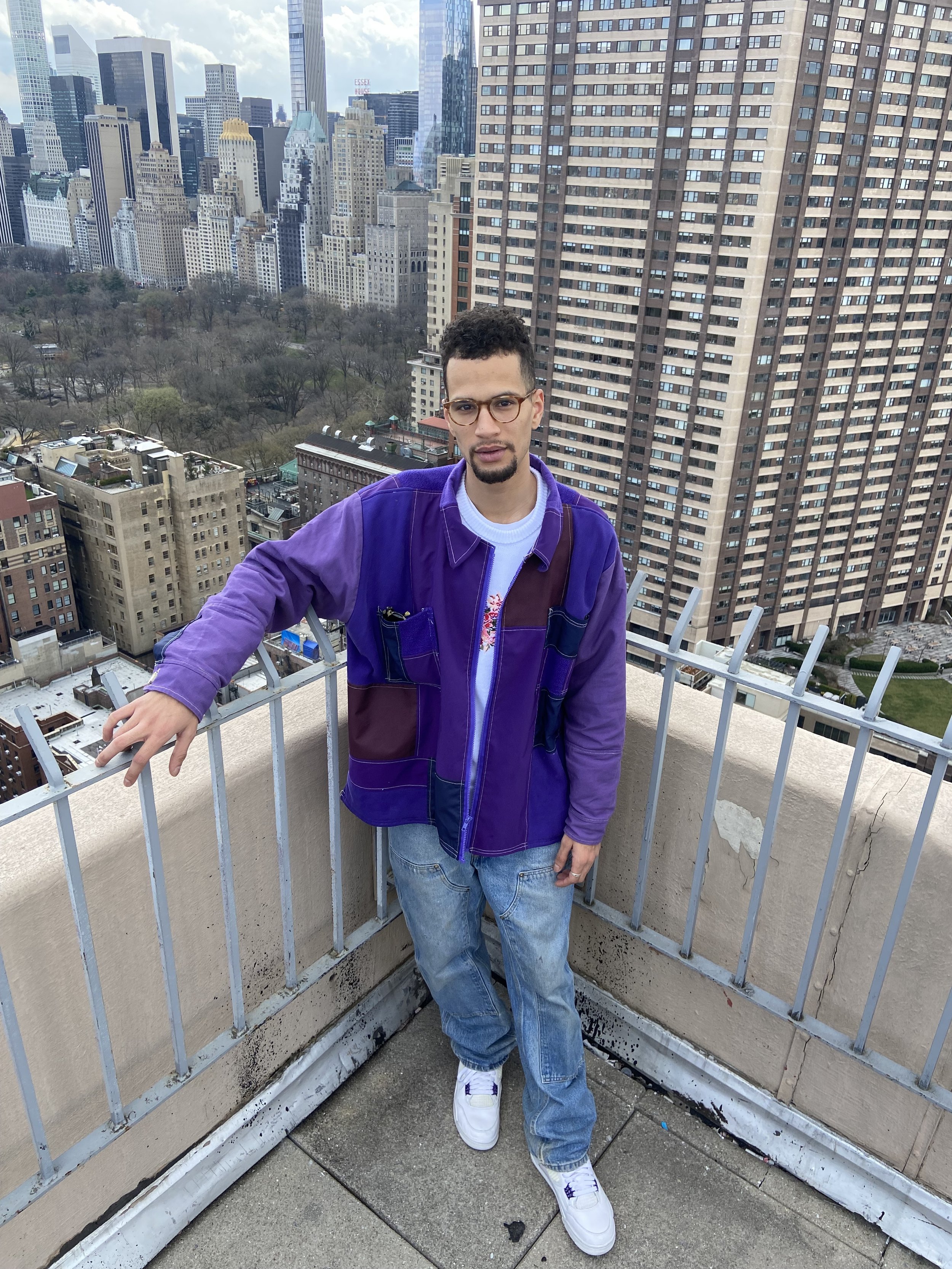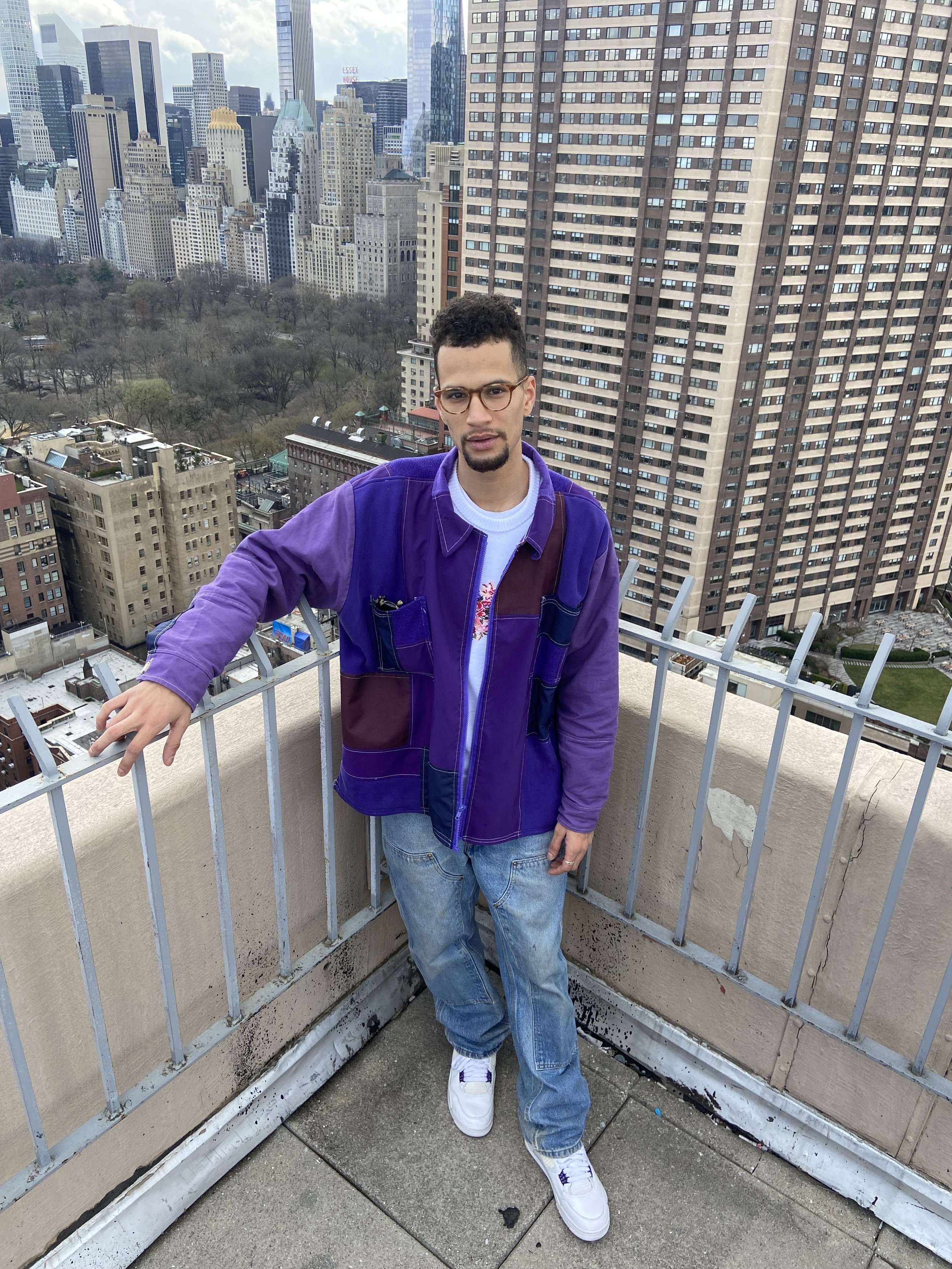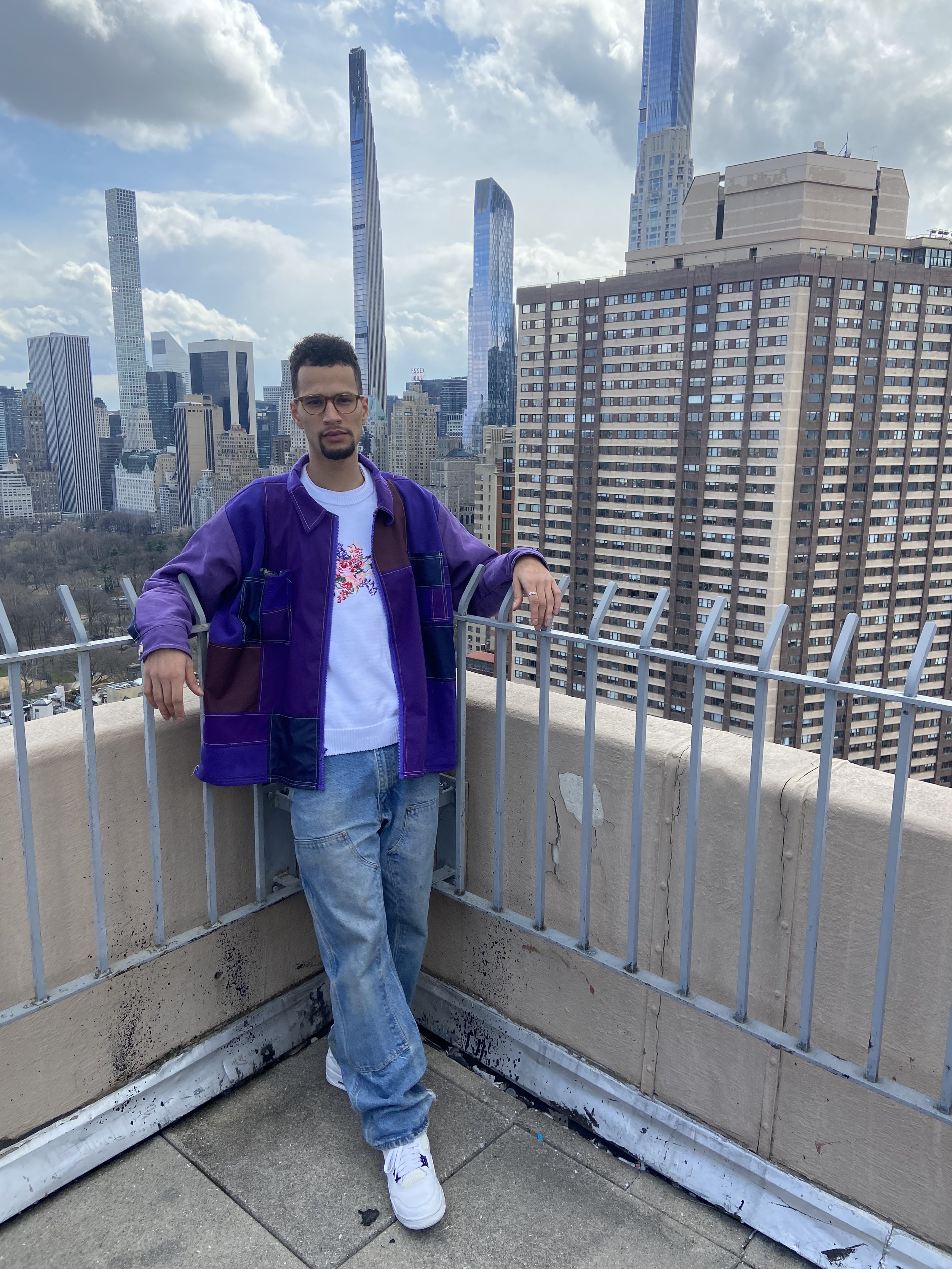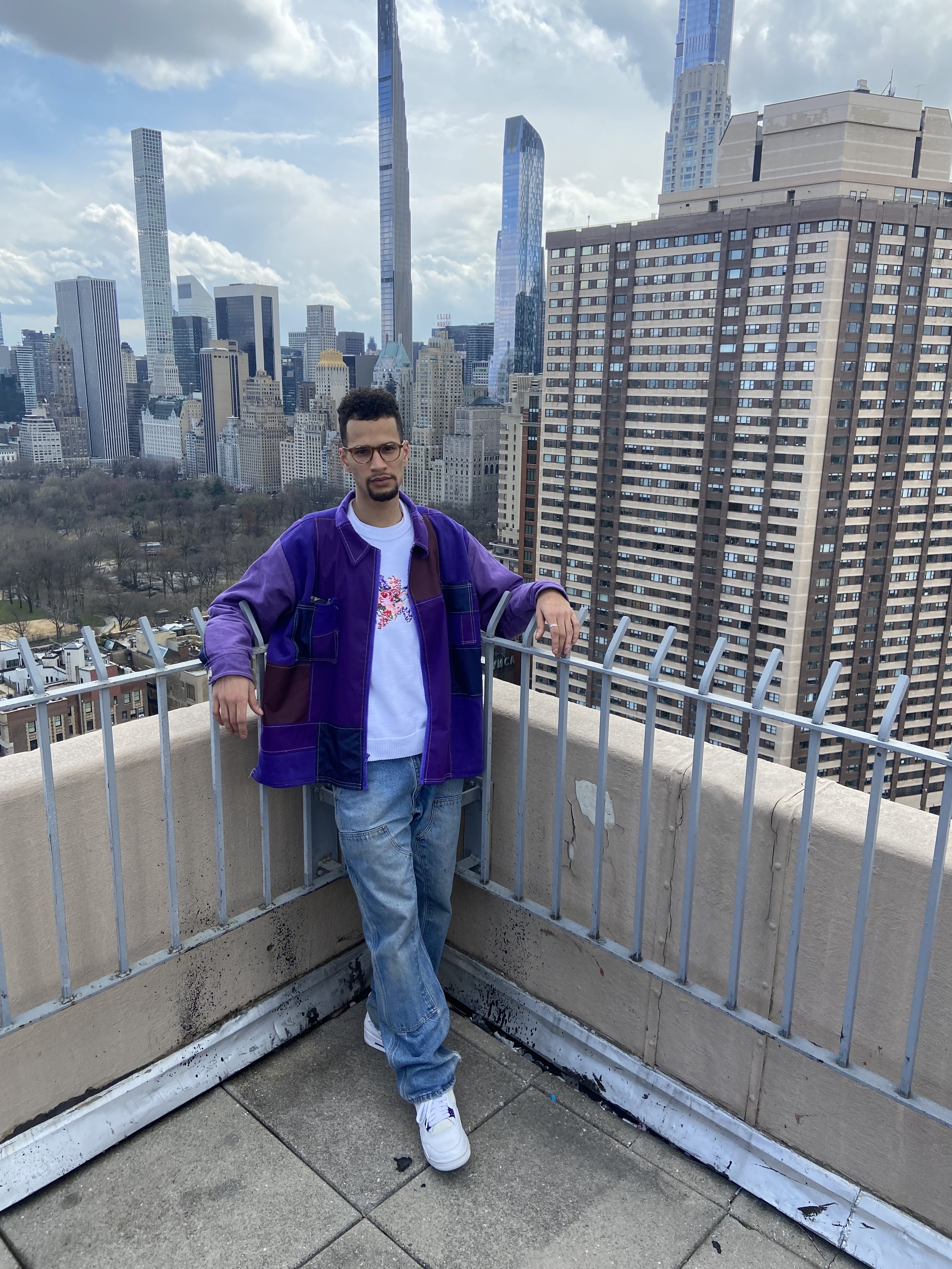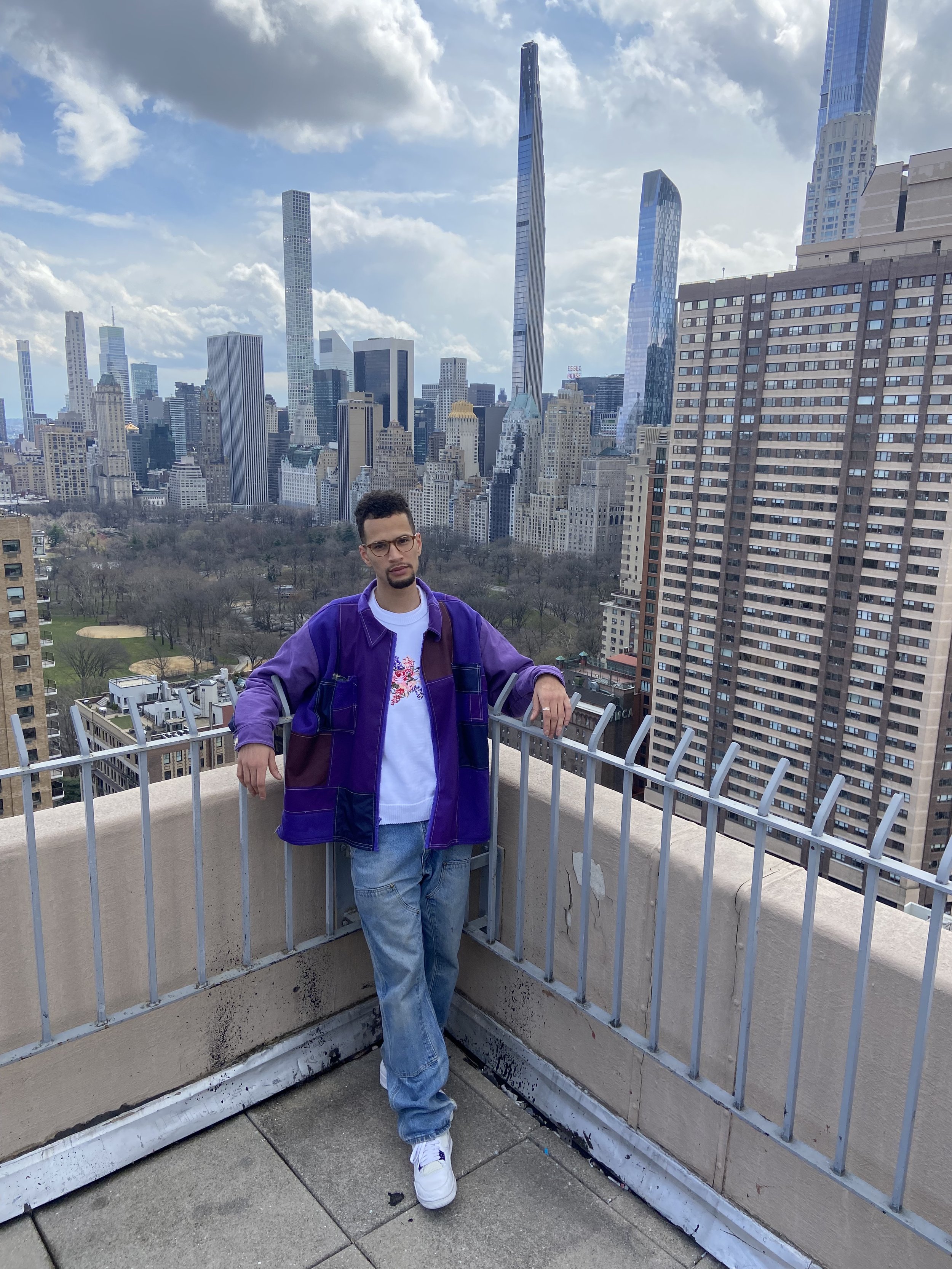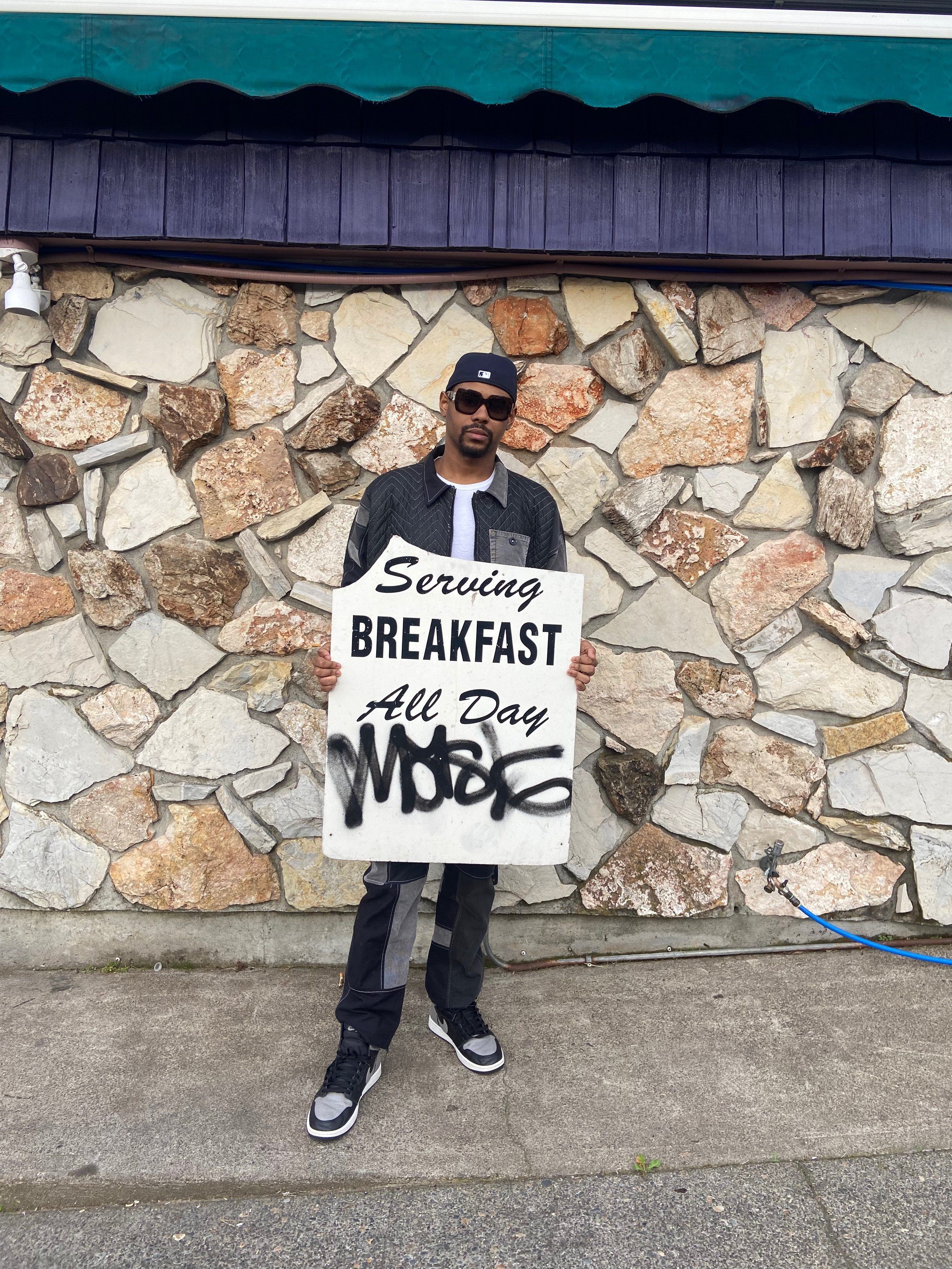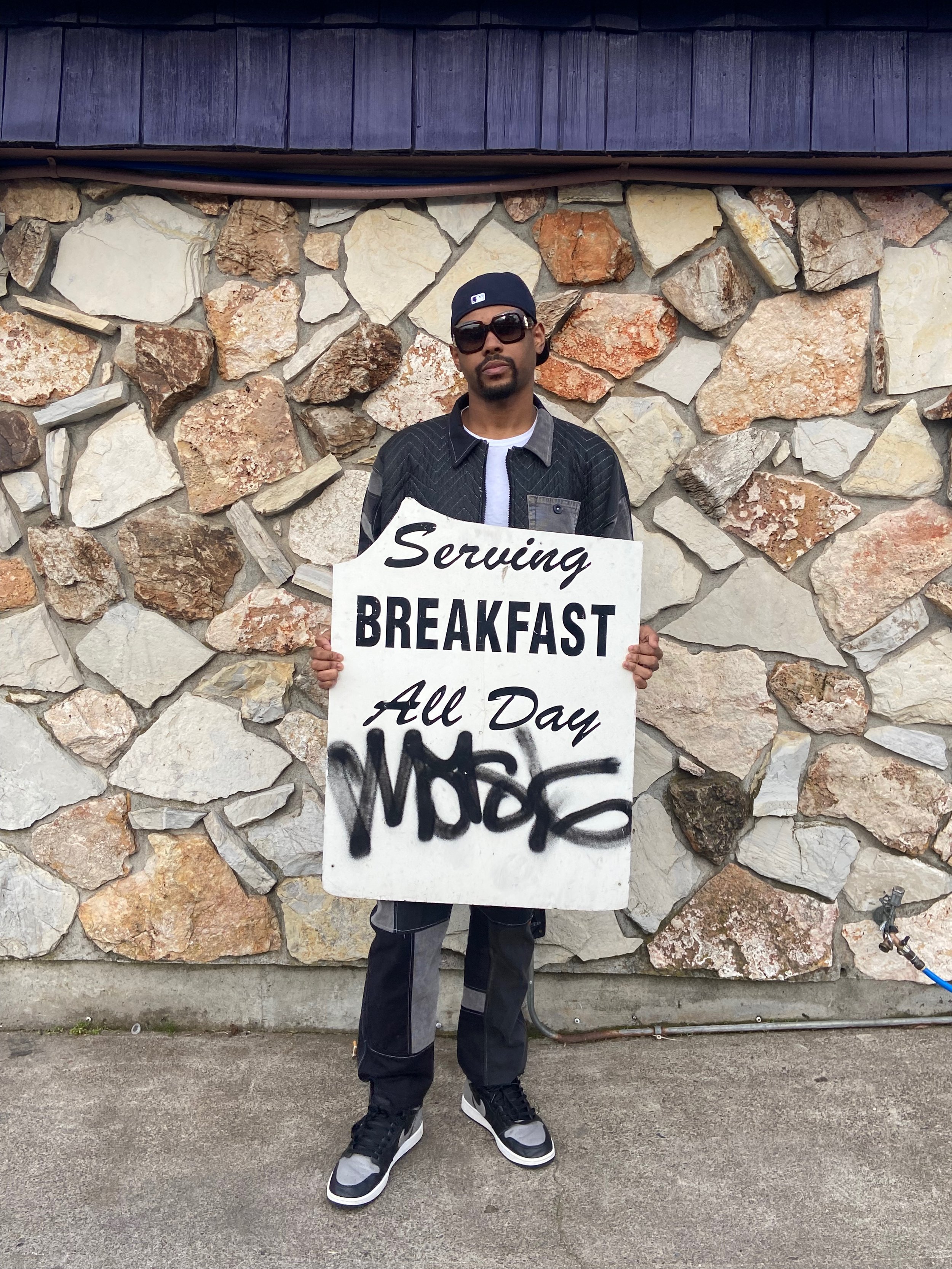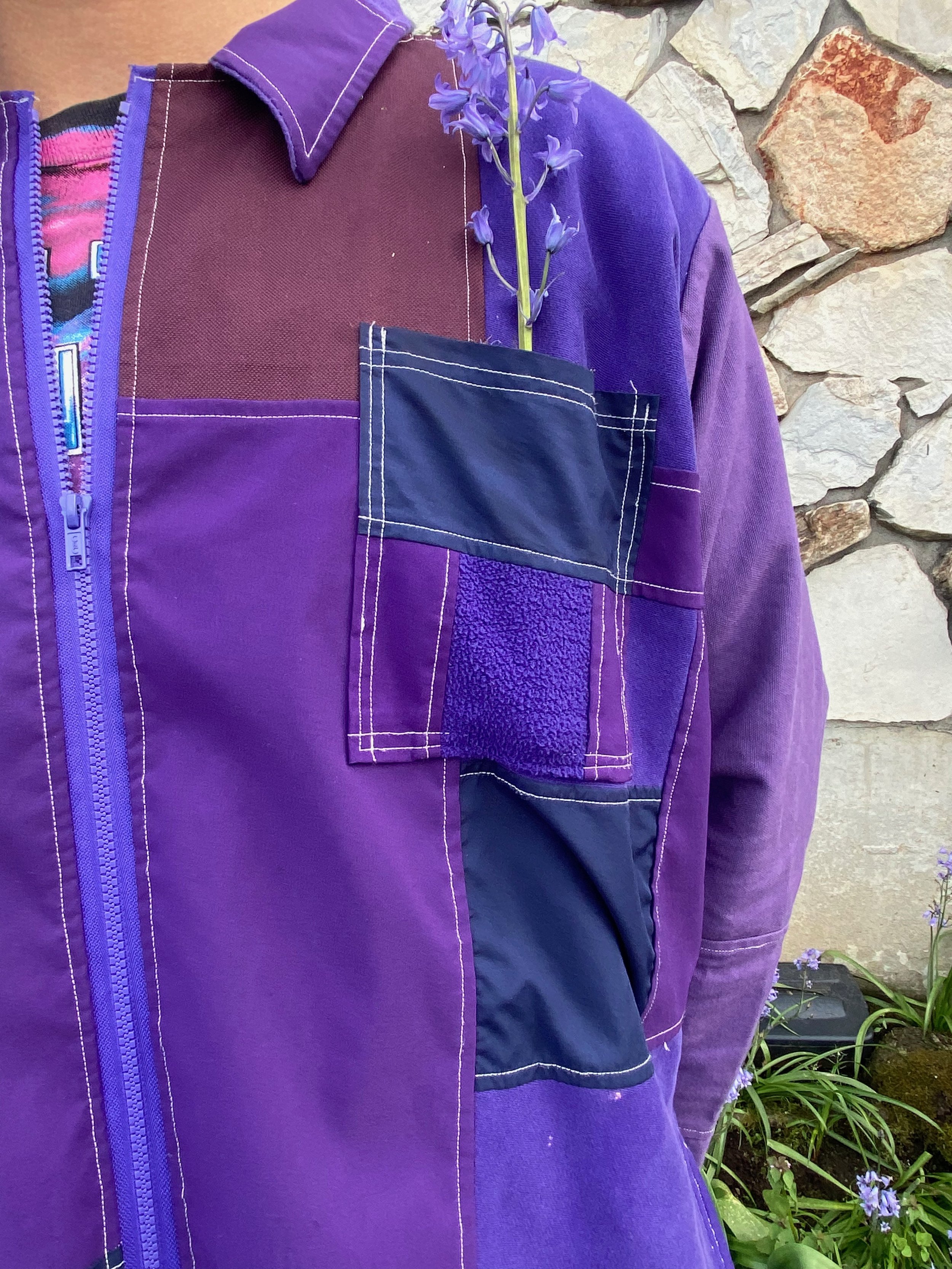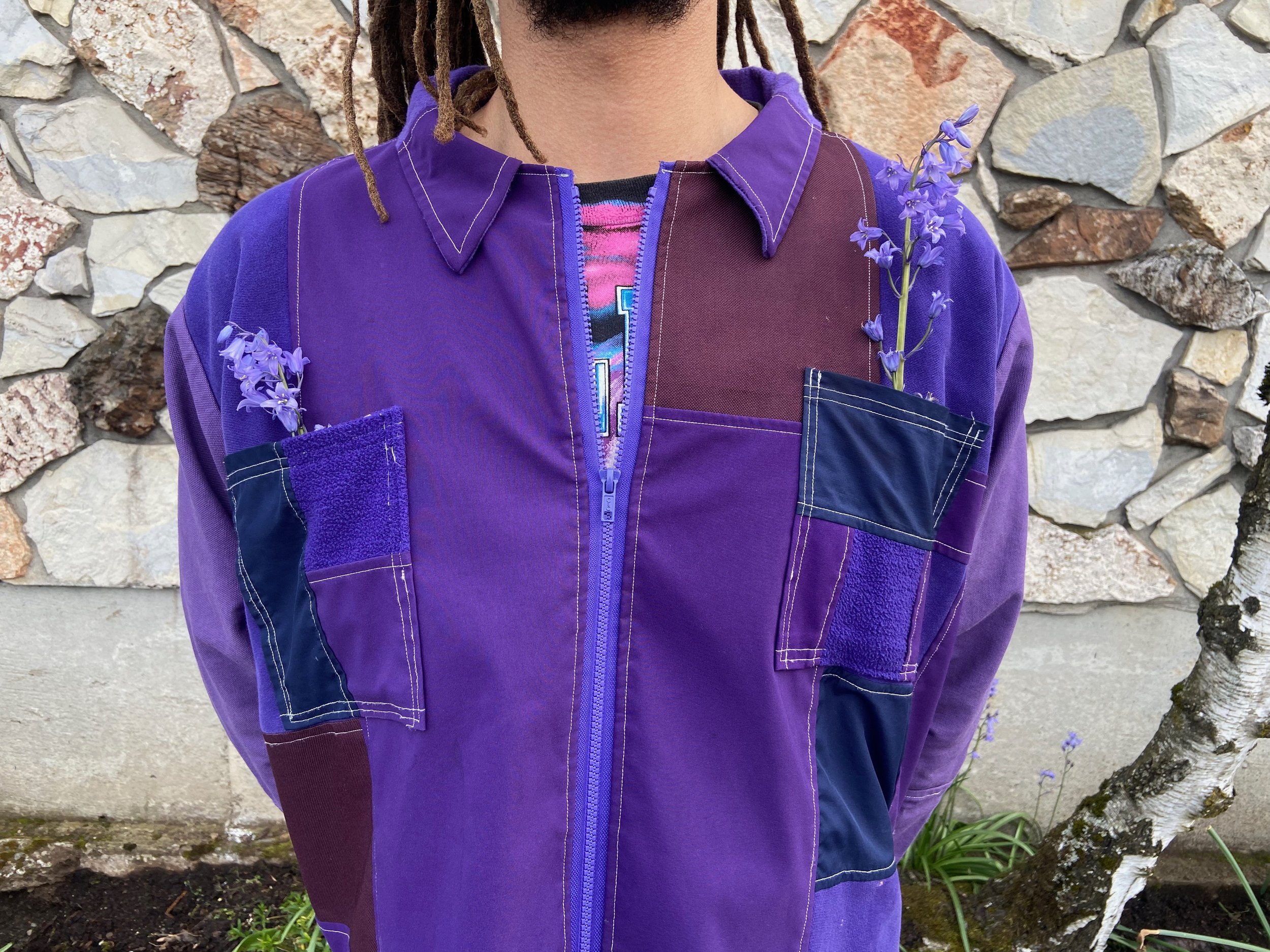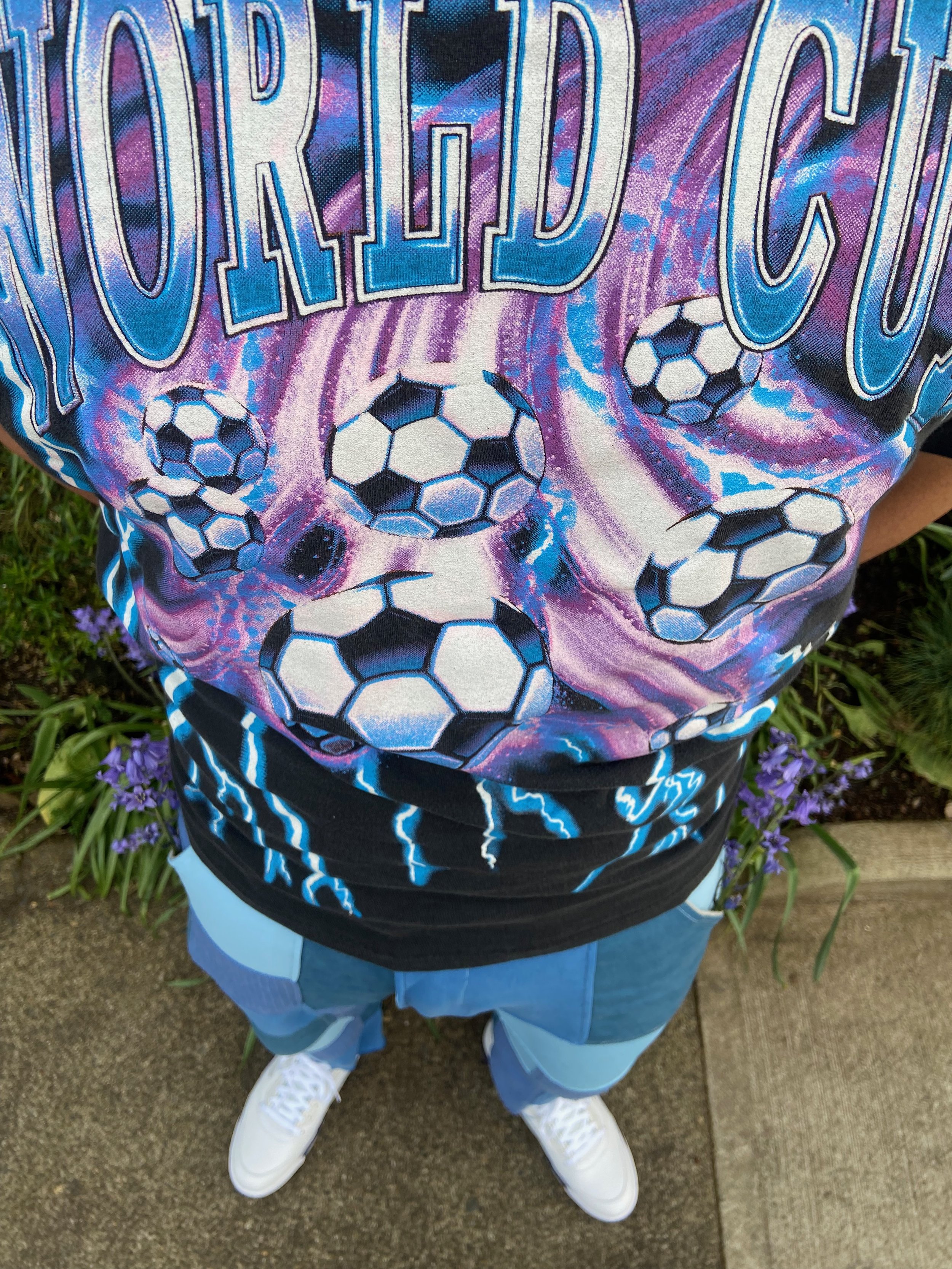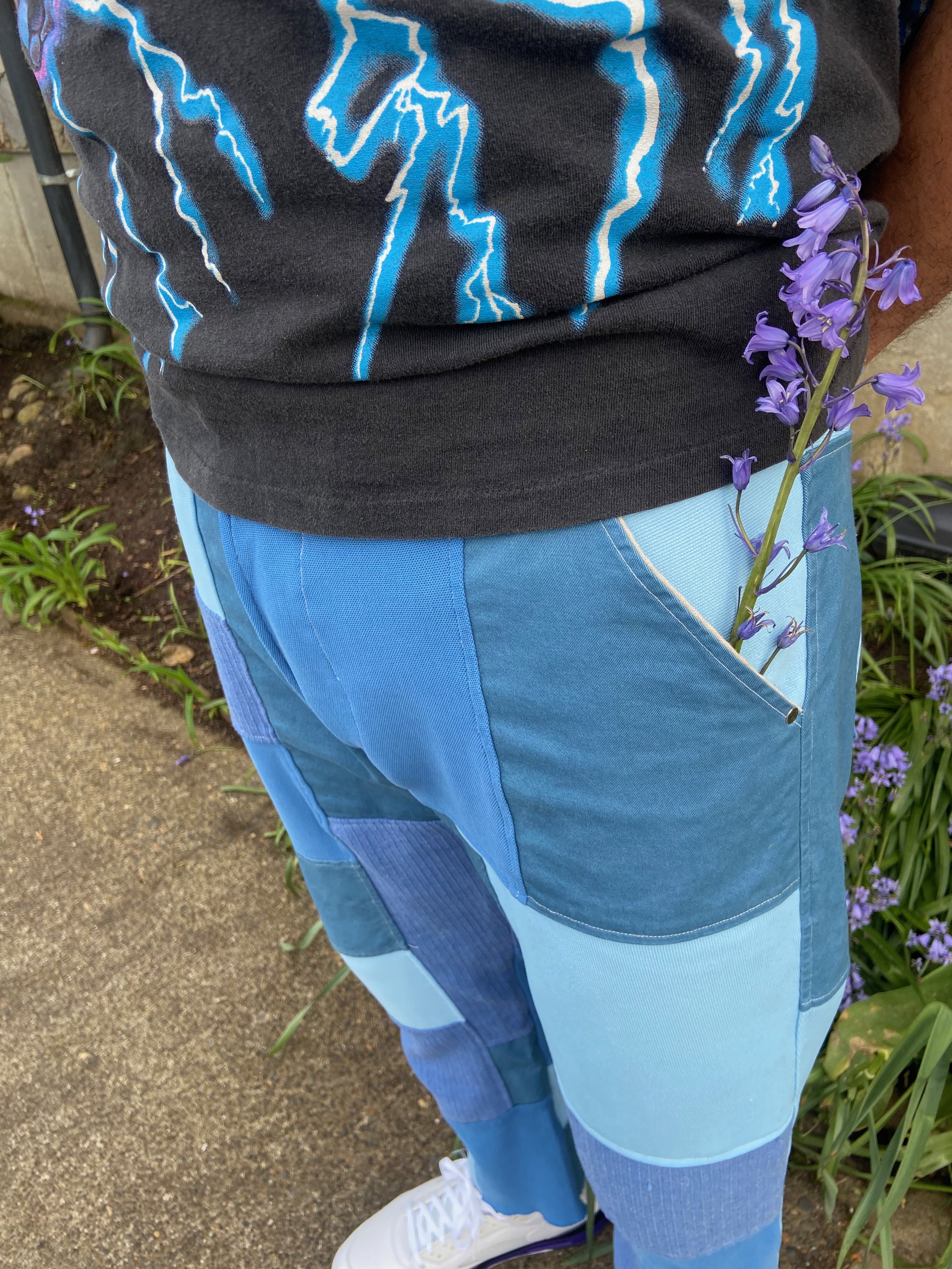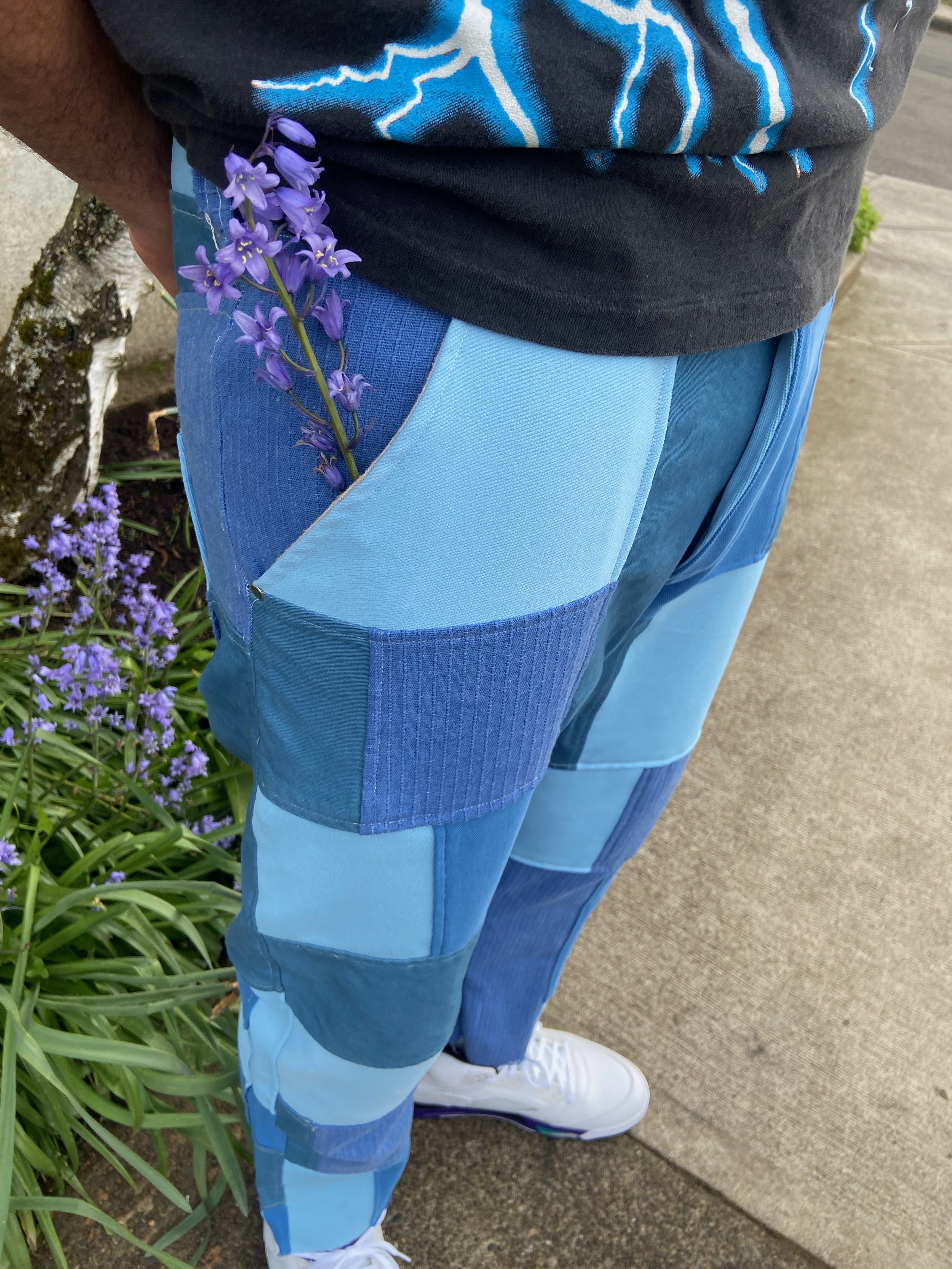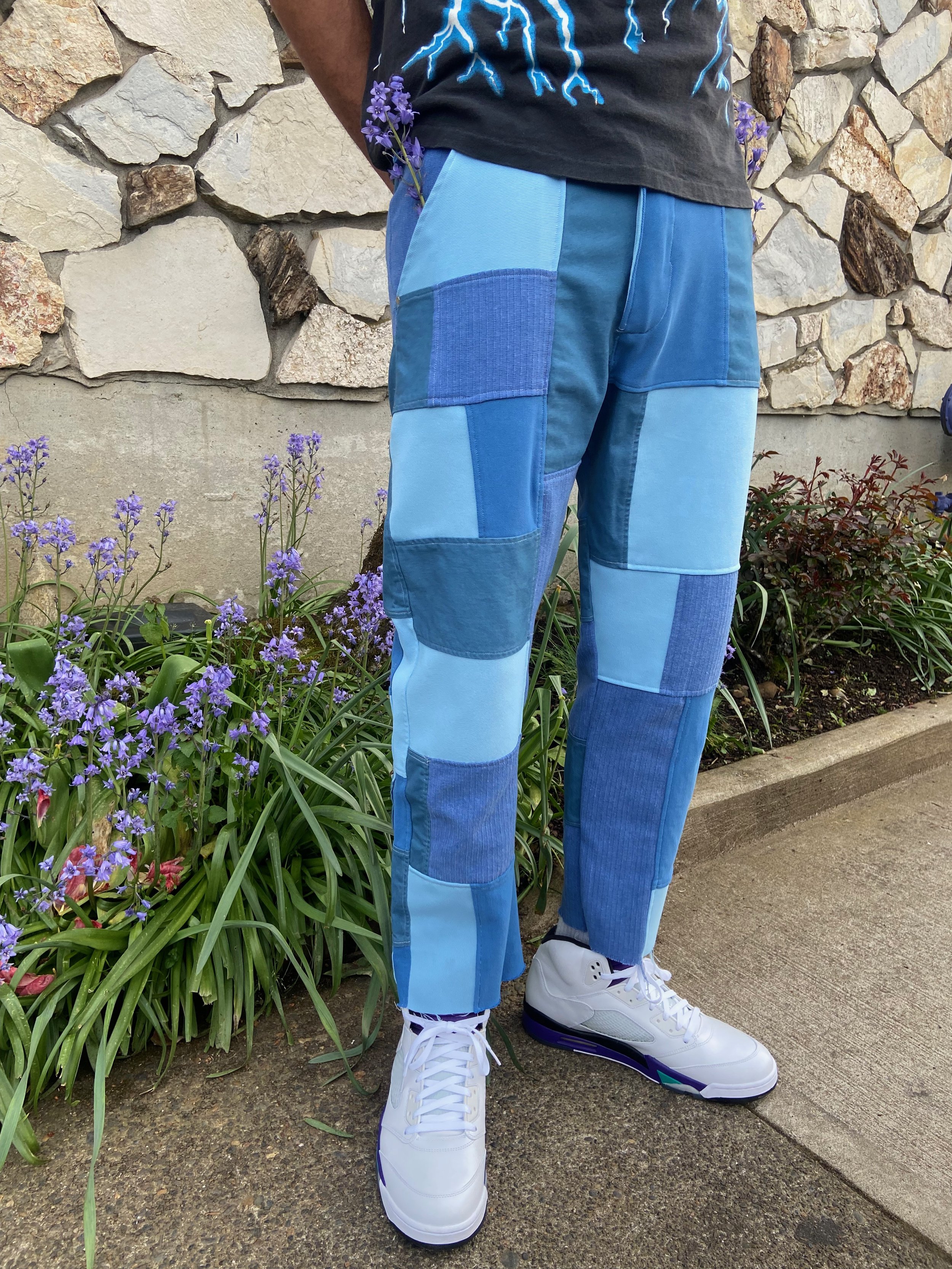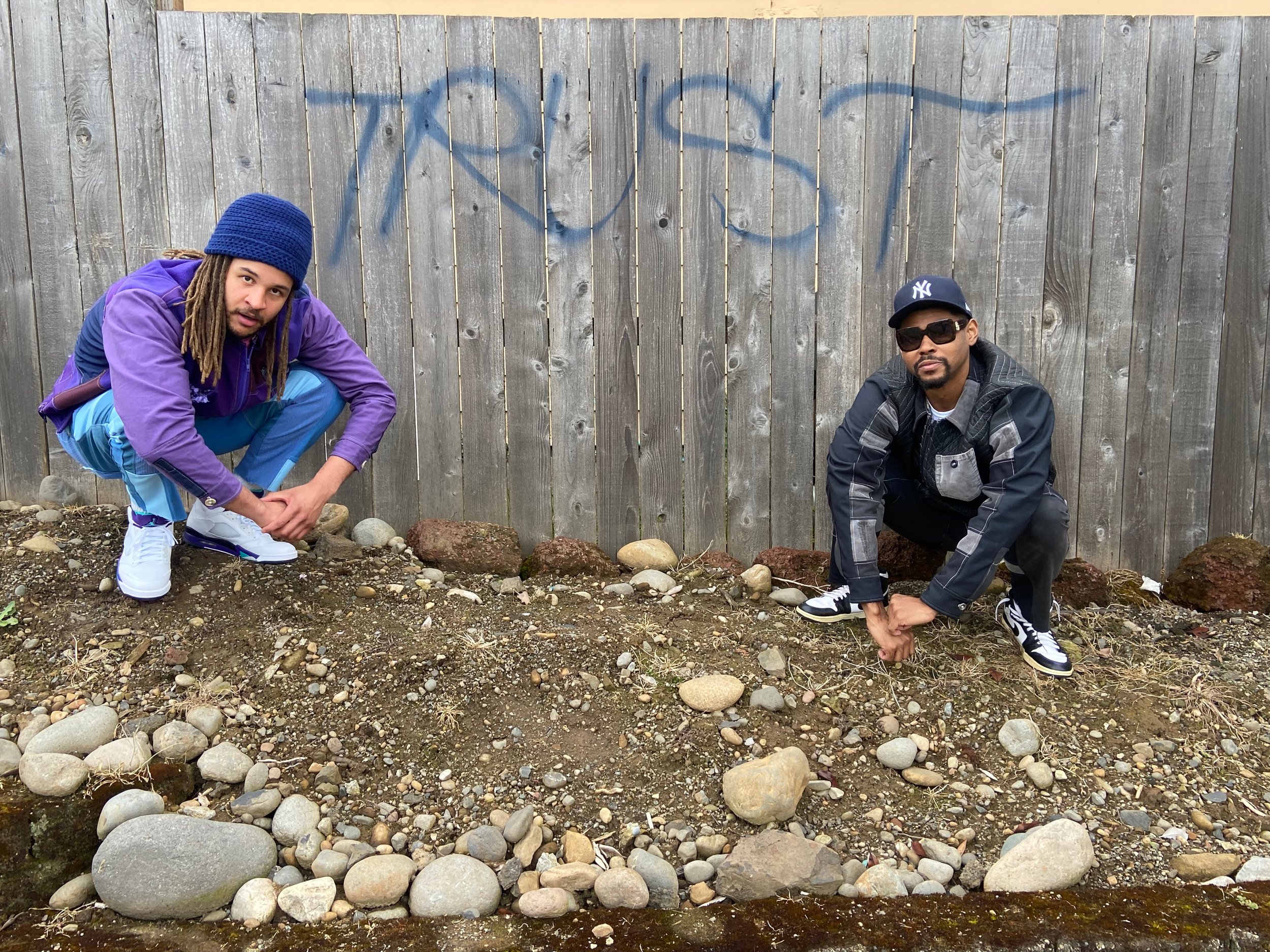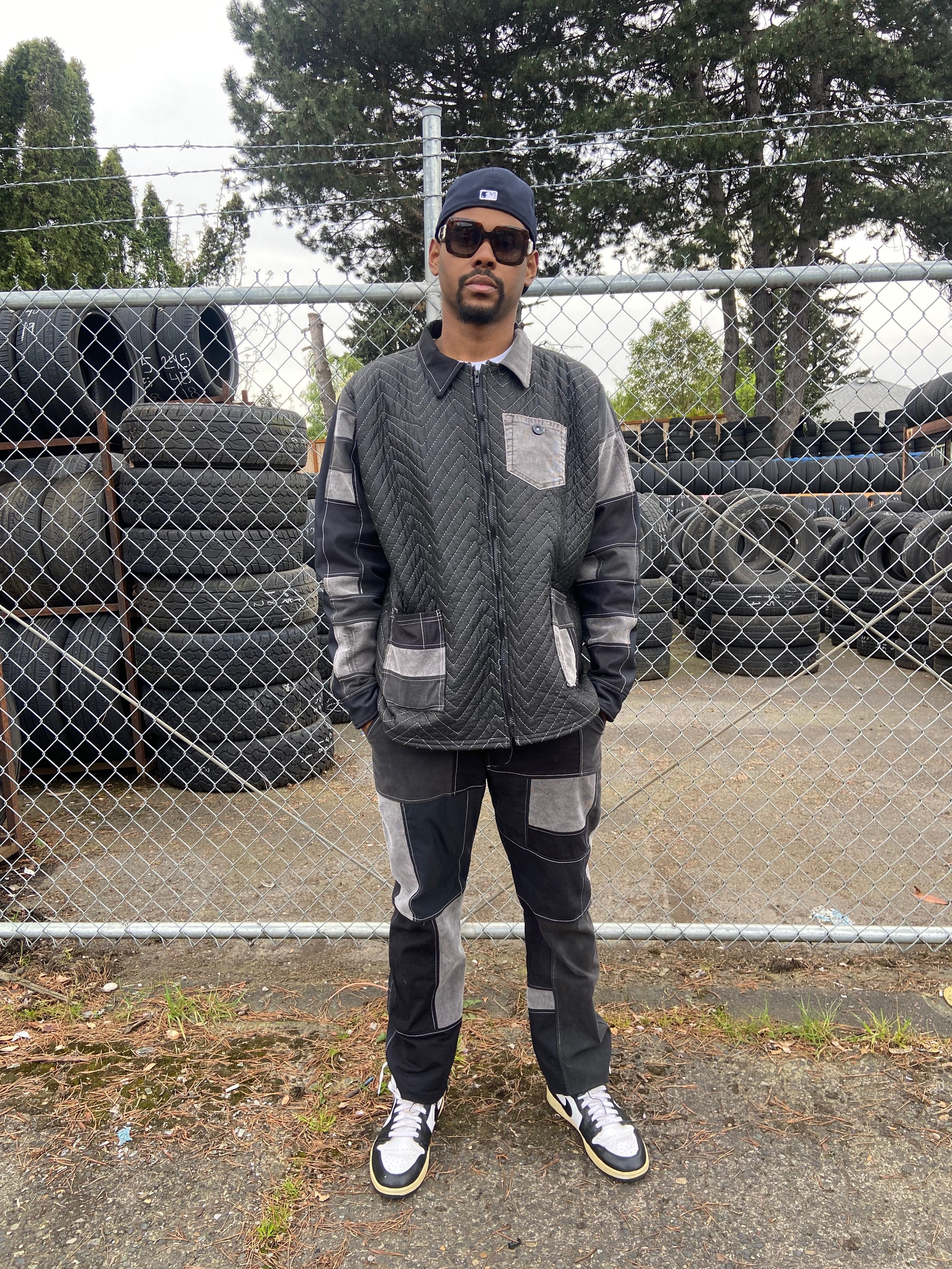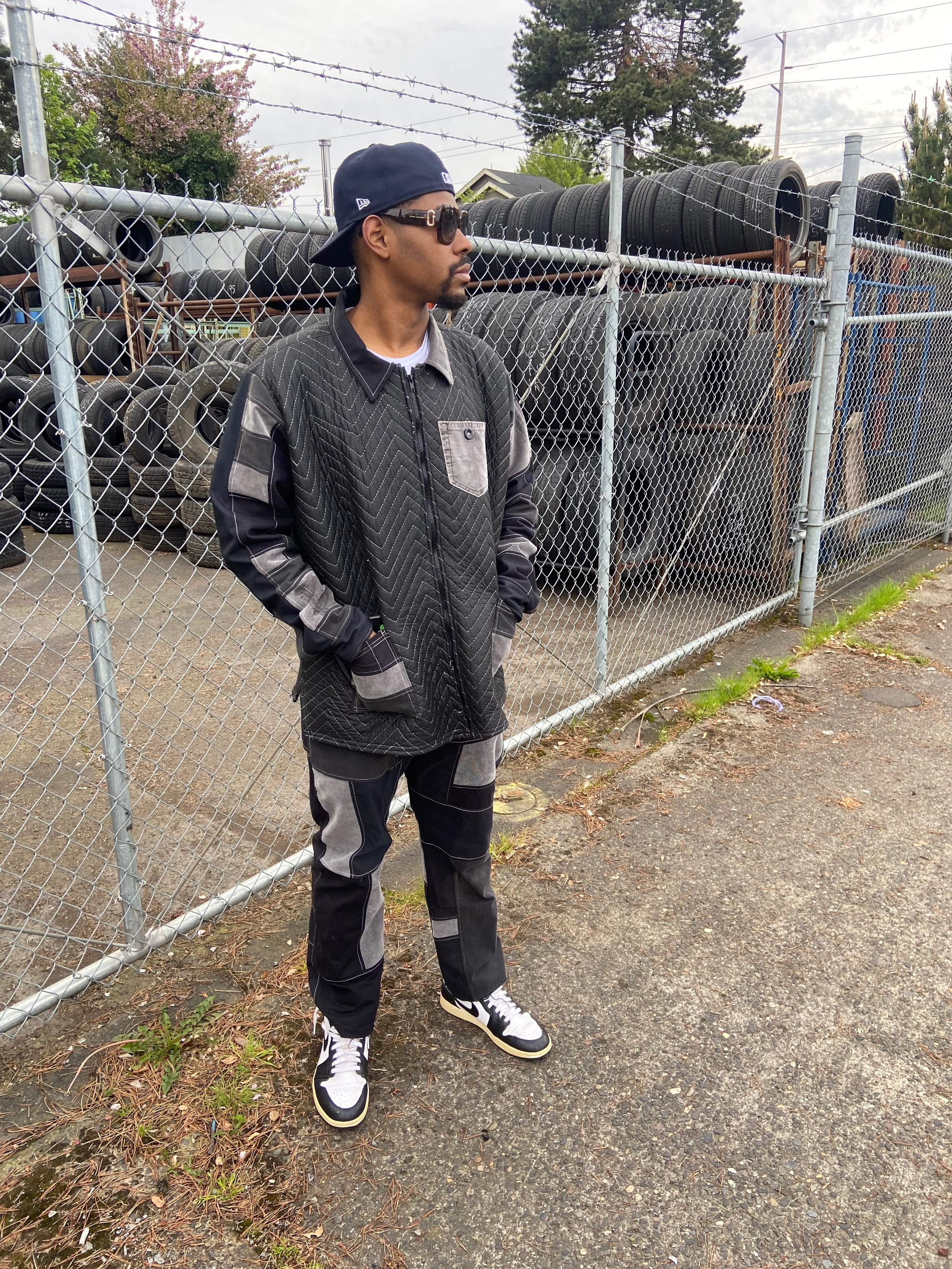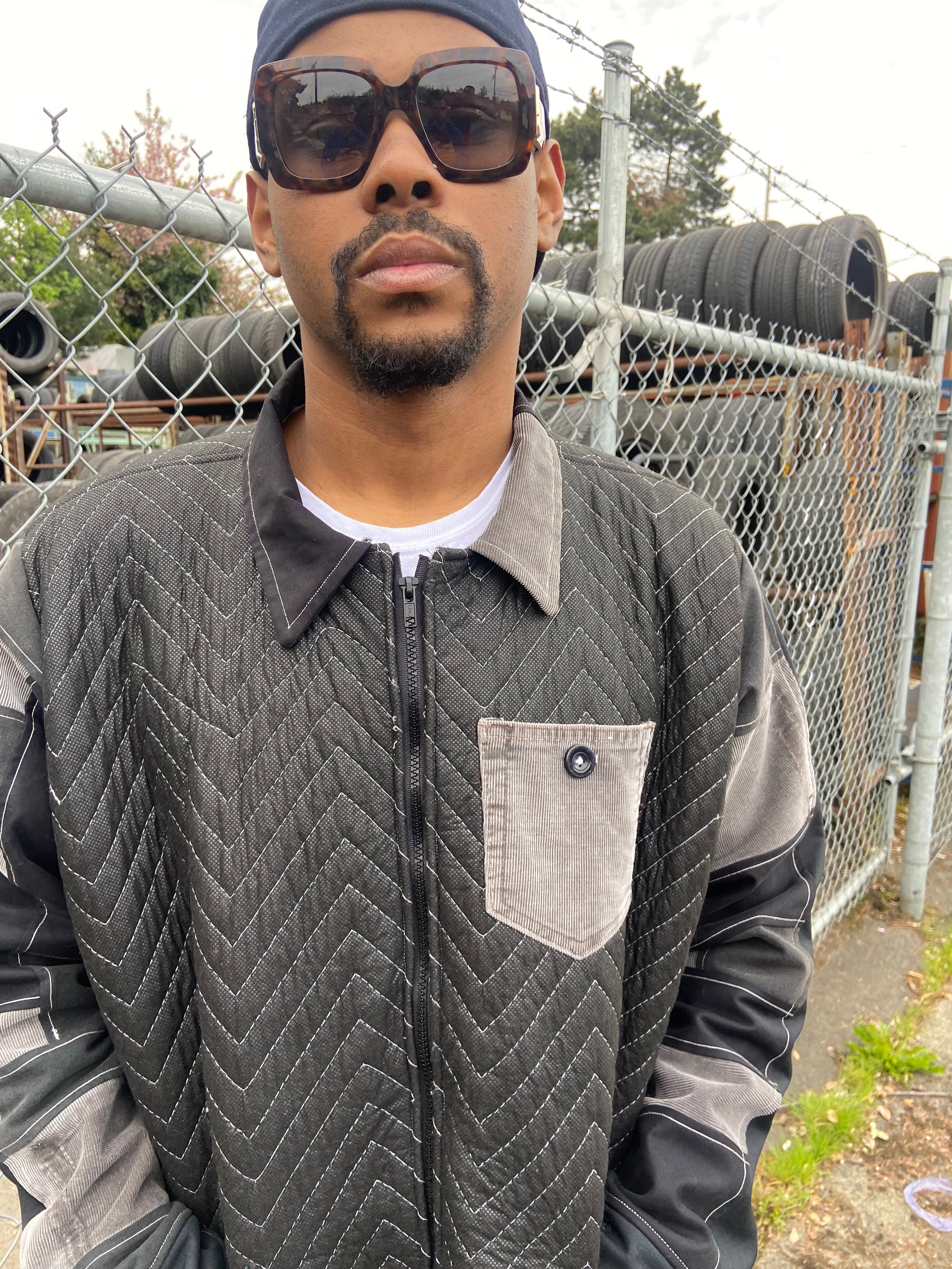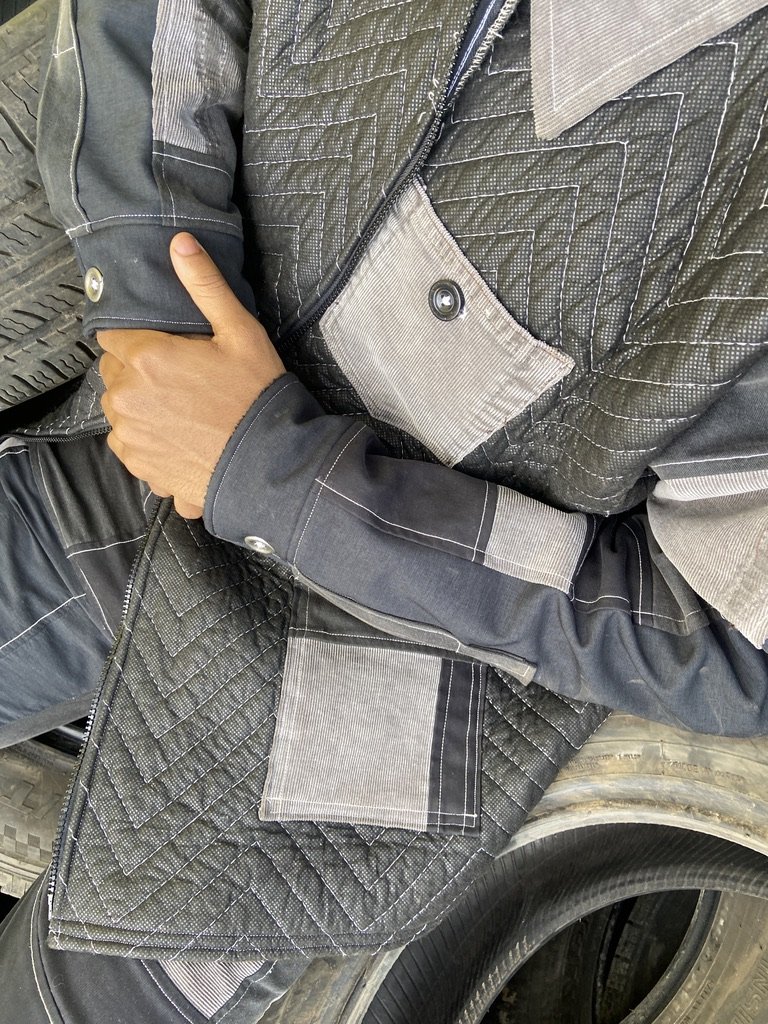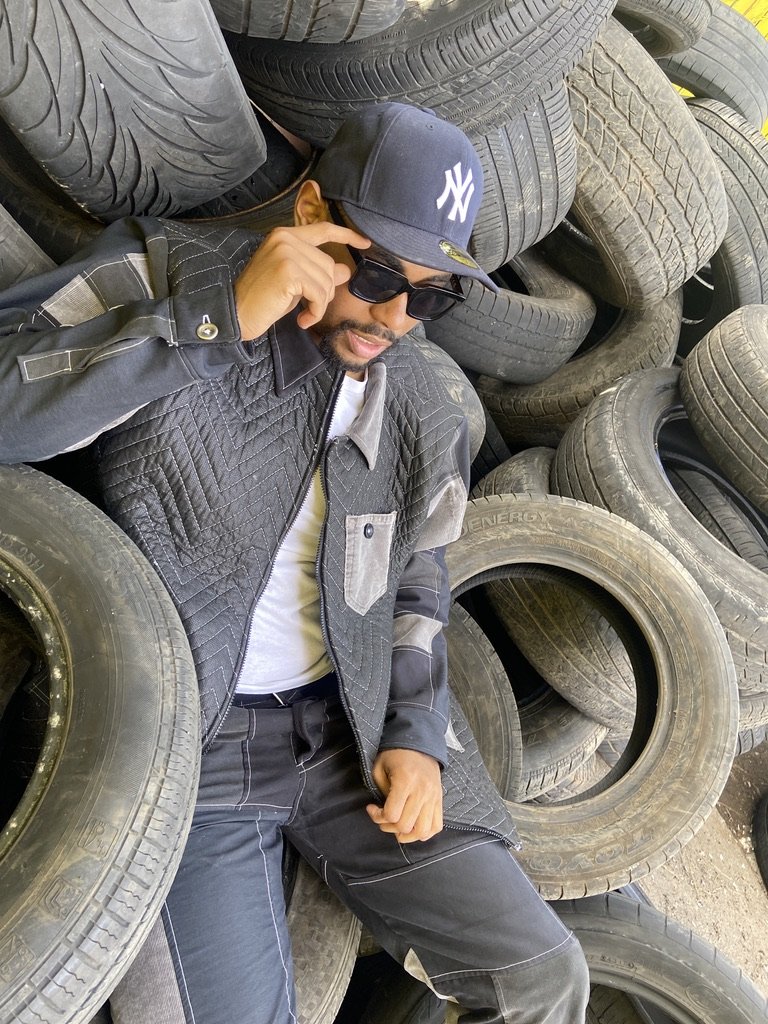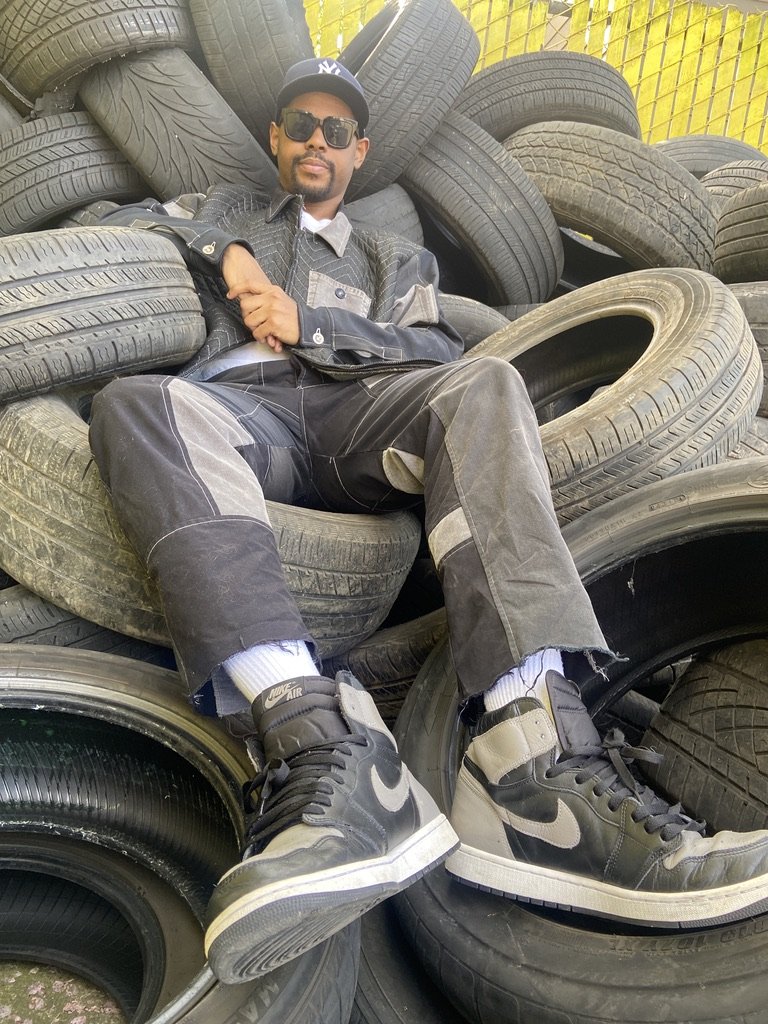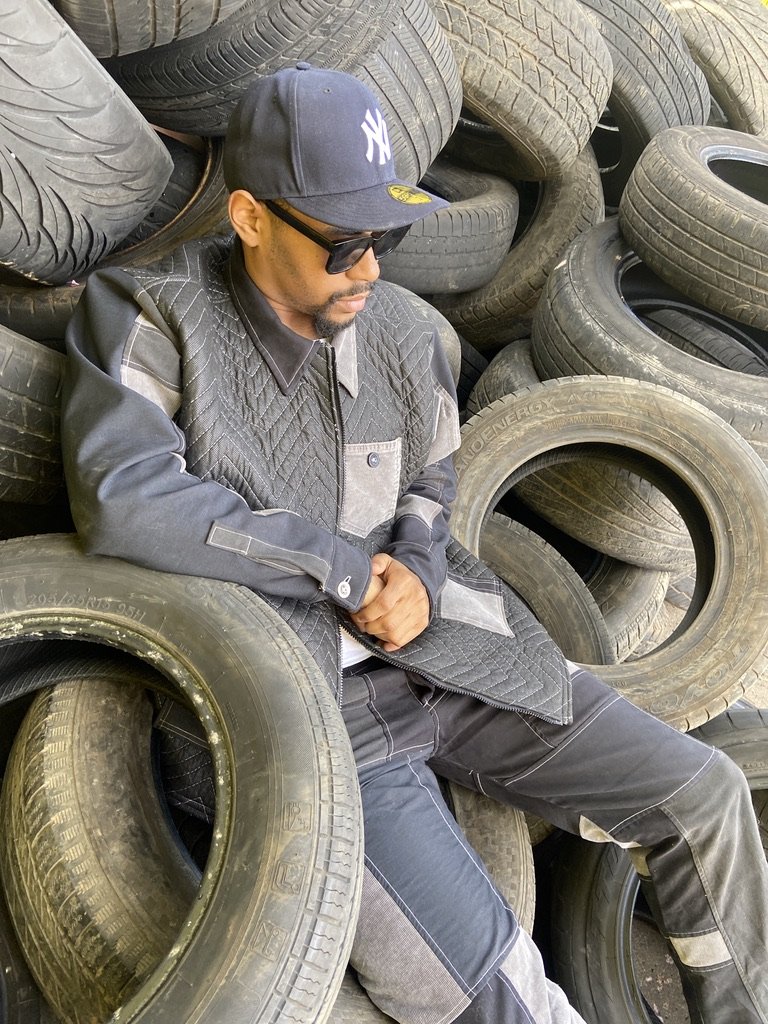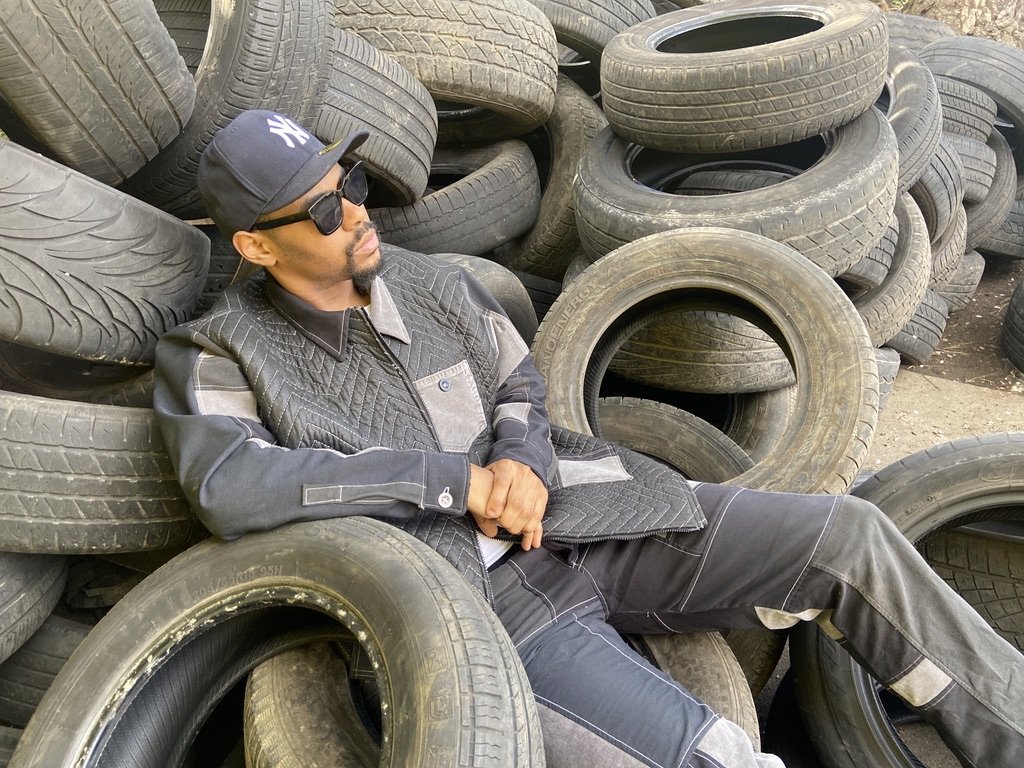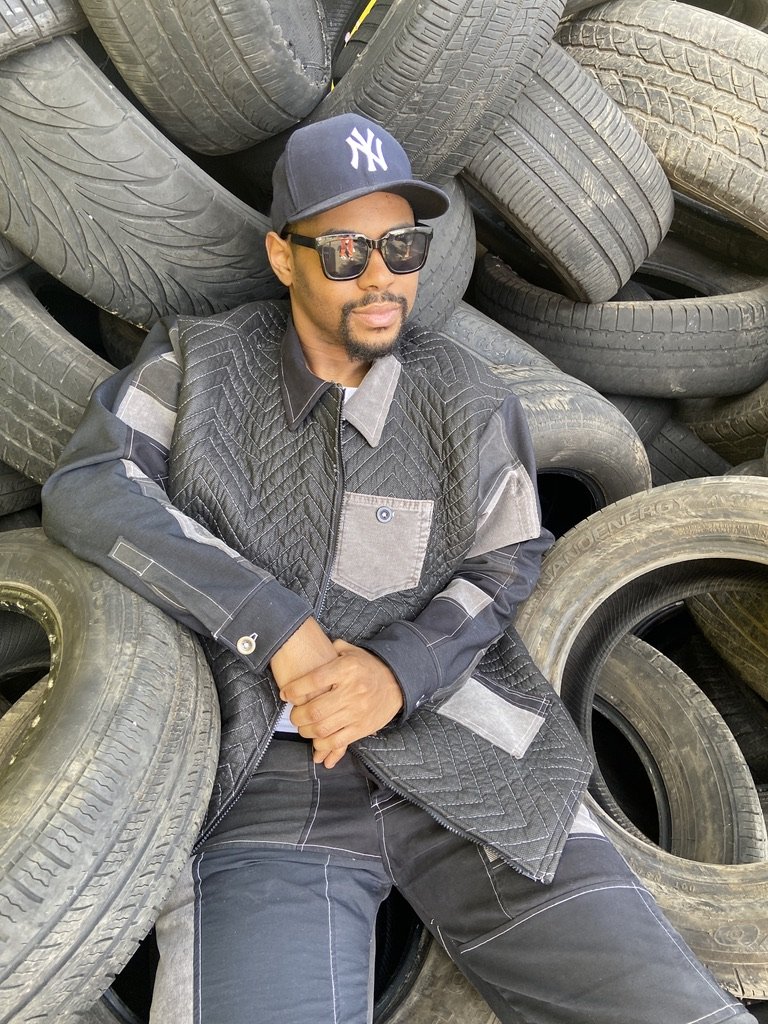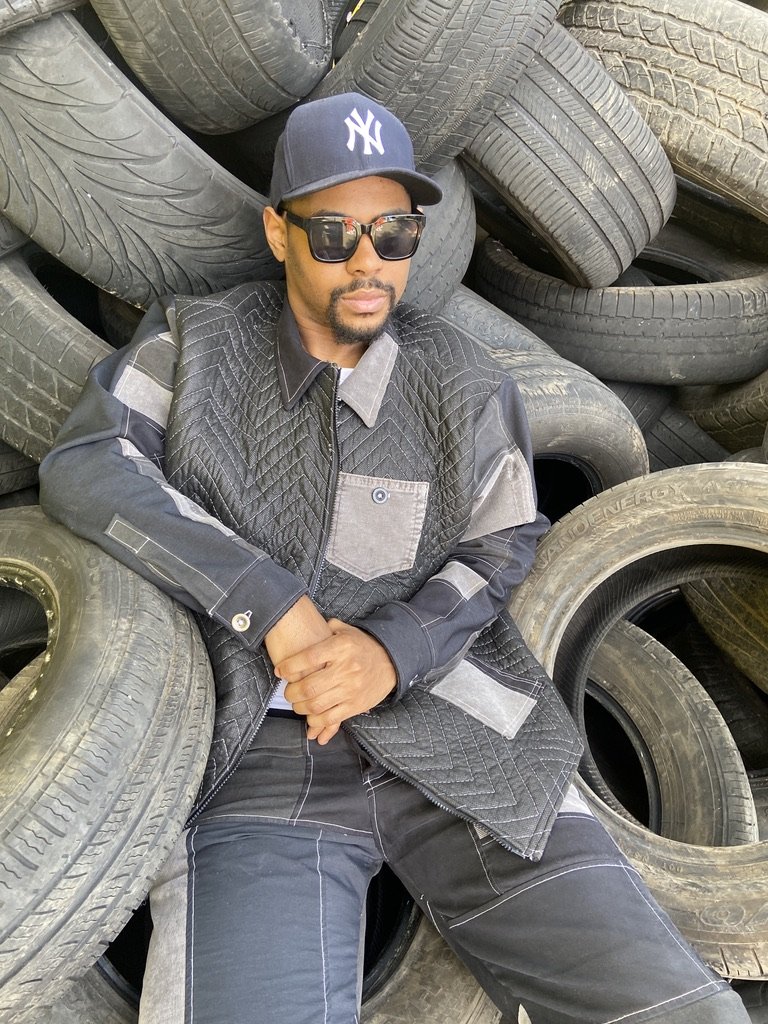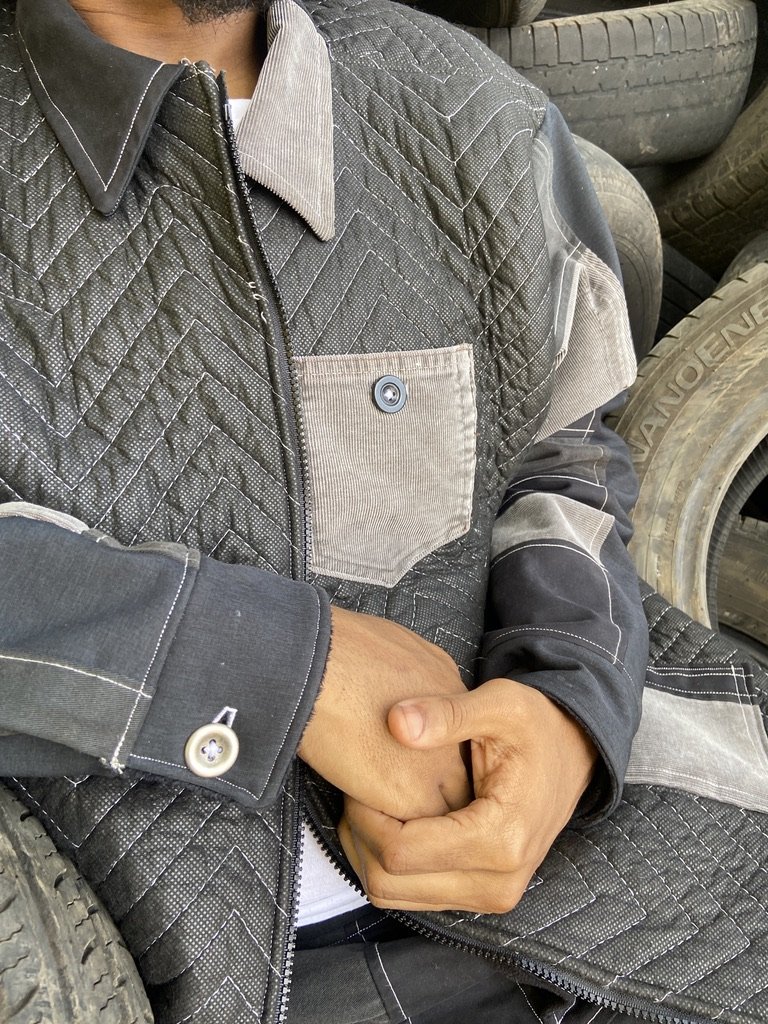Lonely Deviant
Lonely Deviant is a local brand run and created solely by James Bullock. The pieces are all up-cycled 1-of-1 and hand-sewn. It was and continues to be an honor to help create content for the brand. Below, you will find the beginning of a series of shoots we are doing for his newest line of jackets and pants, called “Spectrums.” You will also find the brand’s recent Grant Application that I took lead on.
How did the Covid-19 pandemic impact you as an artist or arts organization in terms of lost revenue?
As an artist, the Covid pandemic impacted me in various ways. The pandemic hit during the spring semester of my senior year in college when I was working on and presenting my thesis installation. The pandemic limited who was able to come and see my installation, which I was hoping would be open to the public. On top of this, my job at a catering company essentially came to a standstill, as events continued to be canceled and gatherings limited. This form of income is important to me as a person and an artist, and I was forced to use my own savings to get by. With this impact on my income, I was not able to spend as much on the necessary supplies, and therefore, wasn’t able to create as much as I would have liked to. While this was the case, I still made sure to prioritize my budget around creating. In the last year and a half, I have produced multiple runs of my up-cycled soft textile clothing brand, participated in a runway show, put on a multi-artist Black History Month Art Exhibit in Old Town, and much more.
How does your artistic practice and work align with IFCC’s Project Goals and the IFCC CAC’s Vision? (Limit 500 words)
IFCC’s Project Goals:
Respect and honor IFCC’s history and roots in the Black community
Uphold IFCC’s original mission to explore, preserve and celebrate Portland’s diversity; and
Advance the City of Portland’s commitment to racial equity.
Being a black artist, born and raised in Portland, I have a deep understanding of what upholding the roots of the black community can look like. Utilizing multiple mediums–including ceramics photography, digital collage, soft textile, and sculpture–my work addresses the theme of resiliency through the exclusion and (potential) misrepresentation of black minds and bodies, along with their contributions to America’s historical landscape. Within this investigation of cultural identity, I am interested in an introspective angle, looking into the notions of the self through the lens of my black body, and its relation to the history of Portland.
My practice is unique and works to disrupt and dismantle a complicated and often racist history in the United States. This history has warped the black experience in this country into a monolith and ultimately failed to offer an accurate representation of the spectrum of black experiences, including those of myself and my family. I believe it is powerful to utilize various mediums working with this intention.
I believe one final thing that sets my work apart is its connection to the environment. My soft textiles are completely recycled and upcycled fabrics, which is a conscious decision of mine to limit waste and push these fabrics to their fullest use. Environmental racism has impacted people of color, specifically the black community, for decades. Growing up black in Portland means you grow up with knowledge and understanding of the Vanport Floods. This alone pushes me to do whatever I can through my art, in favor of the environment.
What type of artistic project or practice do you intend to pursue during your residency?
I would like to create a new iteration of the installation I did for my senior thesis show at Lewis and Clark College. “Uncovering Identity” was an installation that I created to resemble the one in my grandmother’s house as a means to elaborate and comment on what is often a central space in constructing one’s identity and racialization. While I felt as though this project was a success, as an artist, I never feel that a project is ever truly finished.
Therefore, I would like to return to this project, with a new iteration, based on a new set of eyes and a different perspective. Since doing the original installation two years ago, I have had new experiences, my style and creative process have evolved, and I think a new iteration would be the perfect challenge. The idea of doing this as a part of cherishing and uplifting Portland’s black community and history would be an honor. Finally, I believe this opportunity would allow me to bring this full circle, as it could not be open to the general public, as I had hoped, due to the restrictions of the pandemic.
As a final piece of this, I would also like to utilize a space in the gallery to display my soft textile clothing. I will be making and displaying a run of pieces inspired by various black photo archives, including Portland. This gives me an opportunity to show my process for creating soft textiles, while displaying pieces with a connection to black history. These pieces would also be available for purchase to the public once the exhibit closes.
Please describe how having space at the IFCC for your creative practice will help advance your artistic goals.
A protected and comfortable space around other artists, in a space that honors black history and art, would drive and inspire me. Having a gallery space to create this installation would help this revitalized vision come together more fluidly, rather than trying to theorize what each piece next to each other would look like. The gallery space is big enough for me to work on this installation, but also to have another gallery installation on the other side.
To show the versatility of my artistic mediums, I would also like to have a display of my textile process and pieces. My creativity is linked to learning processes and I feel like this space has the resources and connectivity to help me self-reflect, further allowing me to have a stronger awareness and analysis of my work. I love the idea of having a space to process and produce, that also leaves space for improvisation if and when needed, allowing for ultimate flexibility around my artistic expression.
Please describe the public engagement and/or public event you plan on producing that aligns with the IFCC’s vision to “serve as an anchor facility where the history of Portland's Black community, and its rich arts and culture contributions can be presented, displayed, discussed, and honored.”
For my public event, I intend to show the new iteration of the installation mentioned above. It will be a fully immersive exhibit that produces an intimate space inspired by the black familial spaces I grew up in and continue to evolve in as a human. This will be a livingroom-style exhibit with interactive components. While the main focus of this event would be this immersive exhibit, I also want to push myself to show an example of all my artistic mediums, if possible.
I will likely be able to incorporate my photography, ceramics, collaging, and sculpture work in the immersive exhibit, but want to make sure I also have a space to displace my soft textile pieces and my creative process. This also gives me some flexibility for display space, in case any of my other mediums are unable to be successfully incorporated into the main exhibit. I also plan to do both photography and videography of the event itself, and depending on how long the event can last, I would like to have it run for more than one day to increase community access.
I also have already thought through how I would engage the community around this project to get the word out. As a native Northeast Portlander, I have an extensive network in Portland’s Black community and the arts community. I have collaborated with various other artists, and have direct roots all over Black Portland, and I will turn to these networks to spread the word. I will also utilize my brand’s network to spread awareness and invite anyone interested in the project.

















